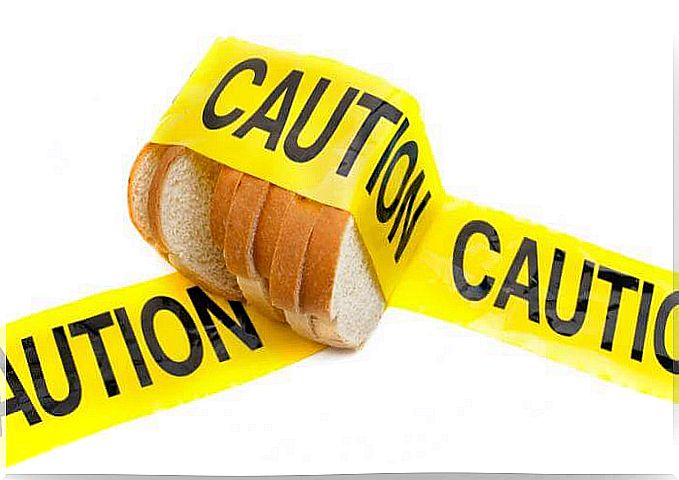Symptoms Of Gluten Intolerance In Children

The symptoms of gluten intolerance are extra-digestive and digestive, they vary depending on age and, furthermore, they are not the same in all children. It is important to know them to try to make the diagnosis as early as possible. For this reason, we want to introduce you to a series of symptoms that can help you to know if your child is intolerant to gluten when you have certain doubts.
Gluten intolerance in children
Gluten intolerance is an immune reaction to a protein found in wheat, barley, and rye. Over time, this reaction damages the lining of the small intestine and prevents the absorption of some nutrients.
In children, gastrointestinal symptoms usually appear that usually begin between 6 and 24 months, after introducing gluten into the diet. The most typical symptoms are nausea, vomiting, diarrhea, low weight or growth problems, according to an article published in the journal “JAMA”. Here we show you these symptoms in more detail.
Symptoms related to digestion
Perhaps the most significant signs that can tell us that a child is intolerant to gluten are those that have to do with the digestive system. Specifically, we are referring to some like these:
- That you have, on a regular basis, swelling in the belly.
- You often suffer from nausea that ends in vomiting.

- It is important to watch your stool. Besides being smelly, they are also whitish.
- The child can suffer from both constipation and frequent diarrhea.
- The child may also complain that he has a lot of gas.
- At other times, state that you often have a tummy ache.
- There may also be a lack of appetite.
Signs at the level of growth
Other symptoms that warn that the child may be intolerant to gluten is that they have a delay in development, a shorter height than children of the same age and, even, a lower weight. In children under two years of age, progressive muscle atrophy can occur and, after two years, they can present delayed puberty.
Behavioral symptoms
Apart from the physical signs, there are also behavioral signs that can indicate that a child has this intolerance. These warnings can be:
- Sudden changes in mood
- Irritability.
- Hyperactivity
- Apathy.
- Dyslexia.
- Autism.
Other manifestations of gluten intolerance in children
Iron deficiency anemia
It is the most common symptom of celiacs. This occurs due to damage to the intestine, which causes it not to absorb nutrients, leading to different deficits, although the most common is iron. Calcium, vitamin D and potassium deficiencies also appear, which makes children have a lower bone mineral density, as evidenced by an article published in the journal “Current Opinion in Pediatrics”.
Dermatitis herpetiformis
Dermatitis herpetiformis is the manifestation of celiac disease on the skin. It is an itchy and blistering skin disease that originates from intestinal gluten intolerance. The rash usually appears on the elbows, knees, torso, scalp, and buttocks.
Dermatitis herpetiformis is usually associated with celiac-like changes in the walls of the small intestine, but this dermatitis does not always produce obvious digestive symptoms.
Cold sores
Canker sores are a fairly common but unknown symptom of gluten intolerance. Canker sores are slightly swollen, circle-shaped lesions that usually occur on the gums, inside of the cheeks, and under the tongue.

Risk groups for gluten intolerance in children
Although any child can suffer from this intolerance, there are risk groups, such as:
- First-degree relatives.
- Children with type 1 diabetes.
- Affected with Down syndrome, according to a study published in 2016.
The disease notably affects white people. It is also more common in women than in men, and it is hereditary.
Gluten intolerance in children, early diagnosis important
Gluten intolerance is 5 times higher in children than in adults. Currently, it is not possible to prevent this disease and the only treatment is to eliminate gluten from the diet. Therefore, if your child suffers from several of these symptoms, go to the doctor to have it diagnosed and, later, a dietitian-nutritionist will recommend a gluten-free diet.










